
A new Kahoot game from the Blue Ridge Poison Center.
- Subject:
- Health Education
- Health/Physical Education
- Material Type:
- Activity/Lab
- Assessment
- Game
- Homework/Assignment
- Author:
- Robin Shepherd
- Date Added:
- 09/05/2023

A new Kahoot game from the Blue Ridge Poison Center.
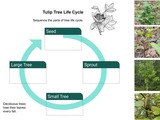
This assessment fulfills the requirements for grade 3 science Earth Space Systems for the local alternative assessment. 3S-ESS4 The student will investigate and understand basic patterns and cycles occurring in nature. Key concepts include:c. plant life cycles.

Last March, schools all around the world were thrust into virtual learning, due to the COVID-19 pandemic. In the future, do you think virtual learning should continue to be an option for high school students? Why or why not?** This performance assessment was developed by a collaborative team of teachers and division staff from Middlesex, Poquoson, and West Point school divisions.
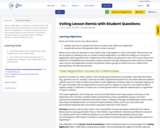
This is a description of voting on a national level. It will Identify ways the U.S. government has promoted voter rights and registration. It will also analyze the factors that typically affect a voter’s decision.
*Remixed to include questions (and answer key) to reinforce students' understanding of the text.
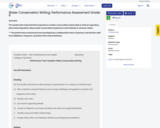
The student will understand the importance of water conservation and be able to write an expository piece informing others about water conservation importance and methods to conserve water.** This performance assessment was developed by a collaborative team of teachers and division staff from Middlesex, Poquoson, and West Point school divisions.

Students will compare the technology of weather instruments long ago to weather instruments today. They will then make a weather vane and compare it to a weather vane connected with technology.
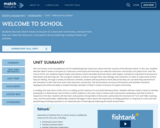
This unit serves as the foundational unit for establishing both classroom culture and the routines of the literature block. In this unit, students discover what it means to be part of a classroom community and how they can make the classroom community a fun place to be. Over the course of the unit, students explore hopes and dreams, how to be polite and treat others with respect, and why it's important to be proud of themselves and who they are. The unit gives students a chance to project their own feelings onto characters in order to make sense of how they are feeling. Through a variety of extension activities, students will be pushed to think about how they can use what they learned from the characters in their own lives and in the classroom community. The final products of many of the lessons and activities should be displayed and reinforced daily as student-friendly reminders of what it means to be part of a joyful community.
In reading, the main focus of the unit is on setting up the routines of a successful literature block. Students will learn what it means to actively participate in a Read Aloud, how to listen to other students in the class, how to interact with and practice vocabulary, and how to write in response to the text. Students will also learn and practice strong habits of discussion, particularly the structures for Turn and Talks: tracking, voice, and focused bodies. Additionally, students will begin to learn about the importance of asking questions in response to a text and how questioning and being inquisitive is an important part of learning and exploring the world around them.
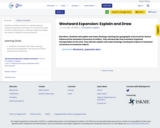
Students will demonstrate an understanding of westward expansion and reform in America from 1801 to 1861 by explaining and creating images that depict the impact of settlers moving westward.
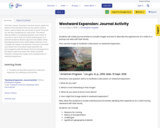
Overview: Lesson Overview
Overview: Lesson seeds are ideas for the standards that can be used to build a lesson. Lesson seeds are not meant to be all-inclusive, nor are they substitutes for instruction. This lesson seed provides a compelling question and a bank of sources to use to drive an inquiry based lesson or a potential Evidence Based Argument Set (EBAS). When developing lessons from these seeds, teachers must consider the needs of all learners. Once you have built your lesson from the lesson seed, teachers are encouraged to post the lesson that has emerged from this lesson seed and share with others. Essential Question: Analyze the causes and consequences of westward expansion.
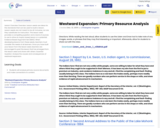
Lesson Overview
Overview: Lesson seeds are ideas for the standards that can be used to build a lesson. Lesson seeds are not meant to be all-inclusive, nor are they substitutes for instruction. This lesson seed provides a compelling question and a bank of sources to use to drive an inquiry based lesson or a potential Evidence Based Argument Set (EBAS). When developing lessons from these seeds, teachers must consider the needs of all learners. Once you have built your lesson from the lesson seed, teachers are encouraged to post the lesson that has emerged from this lesson seed and share with others. Essential Question: Analyze the causes and consequences of westward expansion.
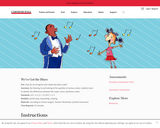
By listening to and looking at the qualities of various scales, students learn to identify the differences between the major, minor, and blues scales.
This is designed to fulfill the requirements for a local alternative assessment for grade 3 history. It is ASOL HS-E 1 The student will match simple descriptions of work that people do with the names of those jobs.

In this unit, students read a collection of texts focused on building an understanding of what it means to be a good friend. This unit, in connection with beginning-of-the-year culture-building activities, will set a strong foundation for building social-emotional awareness within students as they navigate making new friendships within the classroom. This unit will also serve as the launch unit of the year-long theme: what it means to be a good person within a community. Over the course of the year, students will deepen their understanding of what it means to be a good person and grow up in different communities, part of which involves being a good friend.
This unit will serve as the foundational unit for creating a strong read aloud and discussion culture. Building on what students learned in K2, students will practice asking and answering questions about key details, particularly characters, in partners, individually, and through discussion. Students will also learn and practice strong habits of discussion, particularly structures for turn and talks, tracking, voice, and focused bodies. Additionally, students will be challenged to think about characters, what they are like as a person, and what they learn in the story, by noticing the details an author includes in the words and the pictures. Unlike kindergarten units, in this unit students will begin to build connections across texts and build a deeper understanding of the unit theme of friendship.
In writing, students will write daily in response to the text. The focus for this unit is on building student stamina and routines in regard to writing about reading. In Kindergarten, students wrote daily in response to the text, with an emphasis on both the illustration and words. Over the course of the unit, students should begin to focus more on the words they are writing and less on the illustration to convey ideas about the text. However, they should always be encouraged to start with a quick sketch to get their ideas down.

Students can read the book independently or you could read as a class. Them students can complete the quiz/assignment independently. I allow students to complete this assignment open book, one question will refer them to a specific page.
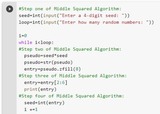
What is Random? Through this project, students will discover what makes an outcome random. Emphasis will be placed on the difference between deterministic and nondeterministic outcomes. The project starts out with a discovery activity where students will see the difference between creating data with a coin toss where they just make up the data and creating data through actually tossing a coin.Students will end the project by studying pseudorandom number generators, specifically the Middle Squared Algorithm. They will even create a program that uses this algorithm. Enjoy!
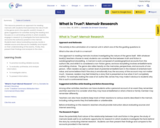
This resource presents an approach for reading memoirs with students that examines the role of truth in the genre and in the specific work(s) chosen. It gives suggestions for activities during the reading and focuses on a culminating activity in which students engage in research to investigate the facts behind the accounts the author(s) present in the memoir. Students learn about evaluating sources, locate a reliable source and discuss its credibility and impact on their understanding of the events,. Finally, they present their findings and analysis to the class.
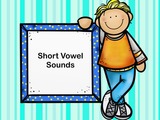
To master short vowel sounds in a fun learning way.

The performance-based assessment is intended to fulfill the requirements for local alternative assessments for VAAP History Grade 3. Students complete the reporting category for geography.HS-G 1c The student will develop map skills by indentifying the shapes of the United States and Virginia on maps and globes.
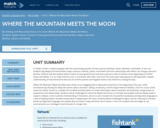
In Grade 4 Fiction, students grapple with the overarching question of how a person develops values, identities, and beliefs. In this unit students dig deeply into how families shape a person's identity, values, and beliefs and how relationships with others can change a person's identity. Students will also explore what it means to have good fortune and how a person's view on fortune varies depending on his/her values and beliefs. It is our hope that this unit, in connection with other units from the entire year-long sequence, will help build a deeper understanding of how we become who we are and the positive and negative factors that influence us along the way.
Where the Mountain Meets the Moon was chosen as an engaging text to help build excitement at the beginning of the year, while simultaneously allowing for deep discussions about character, setting, vocabulary, and the larger theme of identity. Over the course of the novel, the author, Grace Lin, includes lots of detail and description to reveal information about characters and how they change based on experiences and relationships. Students will be challenged to notice the details that Grace Lin includes and analyze how the details build to support a deeper, more nuanced understanding of characters. Grace Lin also includes lots of powerful vocabulary and figurative language as a way of helping readers visualize exactly what is happening in the story. Students will be challenged to figure out the meaning of unknown words and figurative language and analyze why the author made particular word choices. In this unit students will also begin to use summarization as a strategy to track the plot of a longer text.
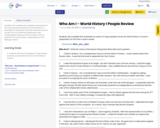
Students will complete this worksheet reviewing 25 of the most important people from World History I. A description of the person and their achievements are proved. You can make this assignment more challenging by taking out the word bank. This is a great end of course review in preparation for SOL testing or exams.